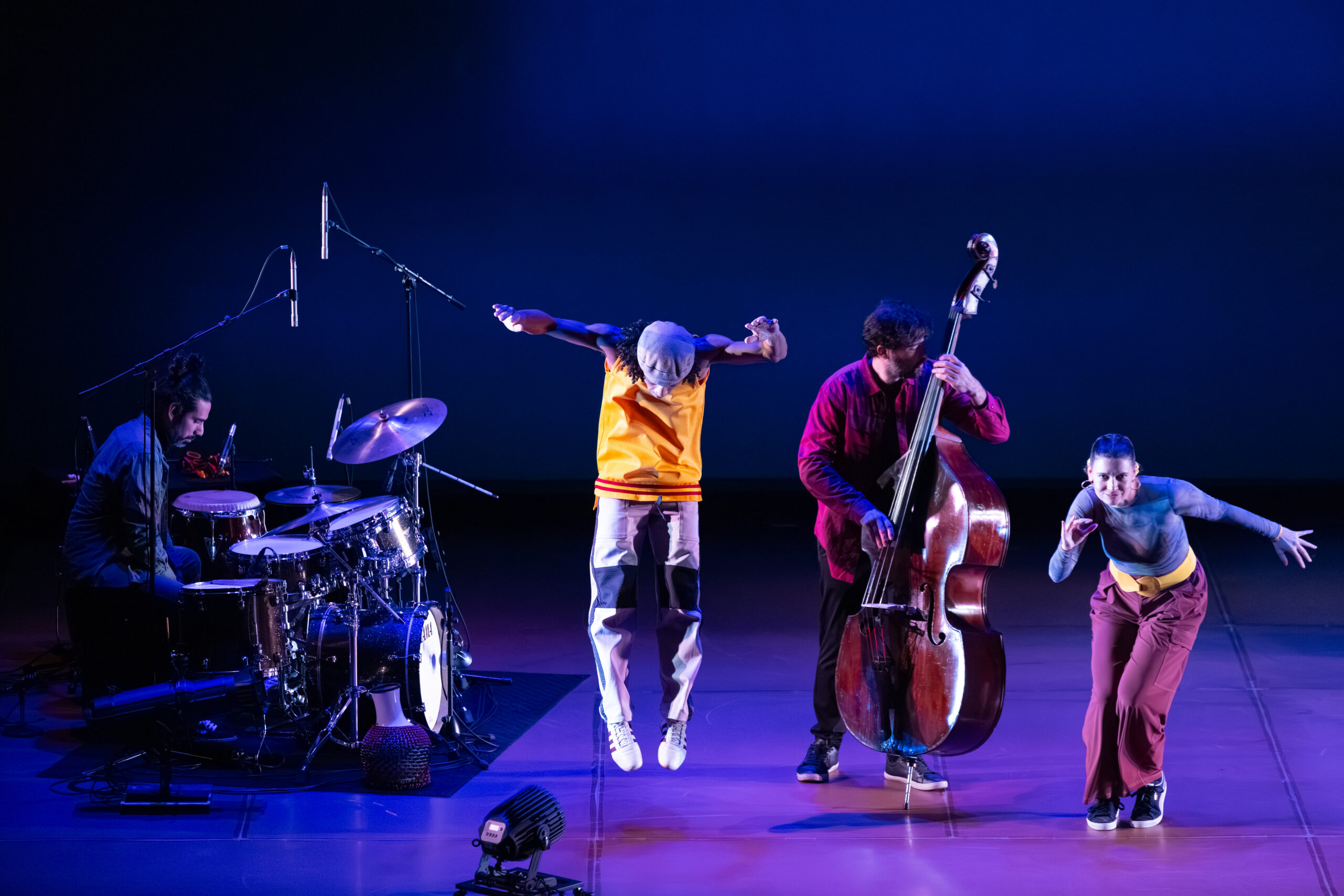Warmth radiates throughout the theater of The Painted Bride Art Center and a waft of burning sage fills my nostrils. The Black Spatial Relics Performance Showcase, one of four events included in the 2019 Black Spatial Relics: Convening, introduces a multitude of approaches towards Black freedom, investigating how Black artists center justice in their work, and by doing so, commit to locating and living in liberation. The facilitator for the evening, Abdul-Aliy Muhammad, asks the audience to take a collective breath and meditate on the questions: “How do we move towards freedom? What room does freedom need? What does freedom feel like? Taste like?”
Eight artists present works or discuss their creative processes: Misty Sol, Marisa Williamson, Jodi Lyn-Kee-Chow, Vitche-Boul Ra, Denise Valentine, Crystal Z. Campbell, Viktor L. Ewing-Givens, and Rayla Meshawn. While not all works are choreographic, all of the artists are playing with concepts of time in relation to how Black liberation is being explored: historic time, interruption of time, even lacking awareness of time. The event runs an hour over its promoted length and while this causes some discomfort within the audience, some Black folx joke about “classic CP time,” a reminder that one cannot put a time limit on locating freedom.
This concept is most present, surprisingly, during intermission. As audience members sip wine and kiki in the lobby, flames are projected on the scrim and theatrical lights flash, sending bursts of bright colors and shadows throughout the space. Soloist Vitche-Boul Ra slithers on his back across the floor, hissing and huffing, using his feet to propel through space. Throwing himself into the black stage curtains, he becomes entangled: he thrashes and kicks until he is free, only to return to a neutral state and walk to another part of the building to begin the exploration again, each time a heightened reiteration. Ra takes up the entirety of The Bride, moving from backstage to onstage, into the lobby and out of sight. Some audience members follow him while others pretend the performance is not happening, but Ra is in his own world, muttering as he moves through the space. Bringing a hand to his mouth he slowly tastes his fingers: sucking on these distals his mutterings turn into guttural yells, finally screaming, “Unhand me. Get your filthy hands off of me!” This exploration of disruption illuminates what I have felt in my own current creative investigations: Black liberation is difficult to access or locate because the process of doing so is constantly being disrupted.
Another artist, Crystal Z. Campbell, shows a video of a piece titled “Currency,” featuring artist Angela Davis Johnson. Set against a sterile white wall Johnson is captured from the shoulders up, bare back toward the audience. Johnson gently shake her locs laden with cowrie shells, causing the shells to sing, scatting their “clackity-clacks” as she whips her hair back and forth. Hands pressed against the wall, Johnson rotates her torso, shifting weight into her elbows and hands that then reverberates into the vigorous shakes of her head. The soothing sound of the shells helps to shift the energy in the space, and Campbell ends with the reminder that “refusal” can be a strategy for freedom as well.
The final artist, Rayla Meshawn, is a vision in red as she spirals her torso and wines her hips, using linear strikes of her arms to carve the air around her. She pours blue sand onto the floor, creating a large circular pathway. As Meshawn leaps and slides across the stage, the tiny blue grains stick to her skin, giving the appearance that Meshawn is a living hourglass, actively shaping time and space. Breaking the fourth wall, she grabs two audience members and leads them to center stage before continuing to pour sand around the pair. Meshawn exits, leaving the pair onstage to awkwardly navigate the transition back to their seats. At first I am frustrated with Meshawn for not taking care of these audience members, literally discarding them onstage, but then I think of the daily disposal of Black bodies within our society and ponder if this intentional discarding of the audience is meant as a moment of resistance, accountability, or both.
I leave Black Spatial Relics reflecting on how I access liberation in my own creative praxis, thinking of the questions Muhammad posed; “How do we move towards freedom? What room does freedom need? What does freedom feel like? Taste like?”
I am locating sustainment as I run towards freedom.
Can liberation be contained or fully accessed?
Freedom feels like kisses from the ocean,
Tastes like lavender honey mixed with sunshine and sweat.
Black Spatial Relics Performance Showcase, 2019 Black Spatial Relics: Convening, The Painted Bride Art Center, November 14-16.
Artists: Misty Sol, Marisa Williamson, Jodi Lyn-Kee-Chow, Vitche-Boul Ra, Denise Valentine, Crystal Z. Campbell, Victor L. Ewing-Givens, and Rayla Meshawn.






